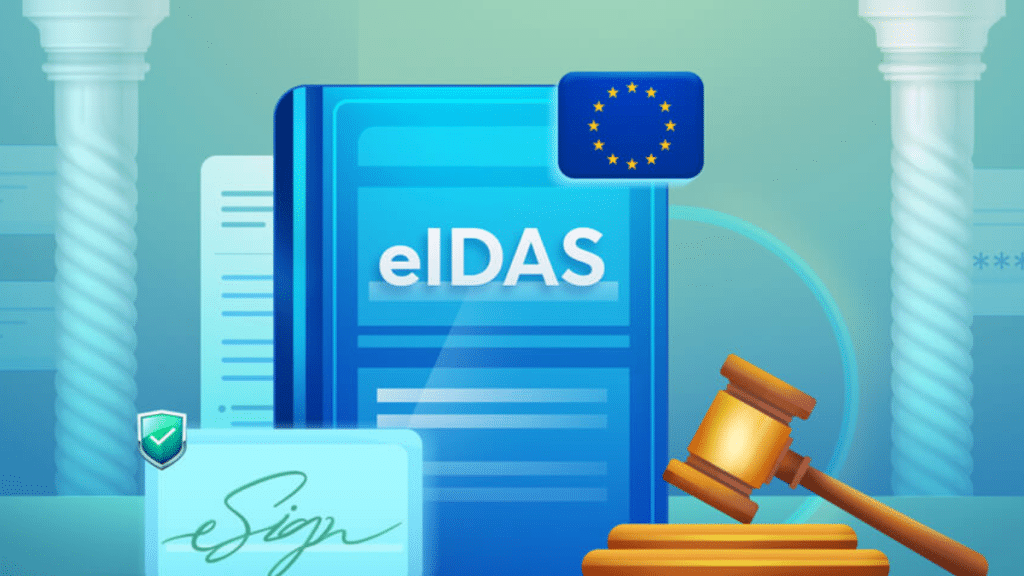In the ever-evolving digital landscape, ensuring robust security is more important than ever. Businesses, governmental bodies, and other organizations increasingly rely on digital solutions for secure transactions and data handling. A crucial part of achieving secure digital operations today is being eIDAS compliant. The eIDAS regulation (Electronic Identification, Authentication and Trust Services) has become a cornerstone for digital security across the European Union, setting high standards for electronic interactions.
Understanding the significance of eIDAS compliance
eIDAS is a regulation created by the European Union to standardize electronic identification and trust services. This regulation ensures interoperability across EU member states, allowing secure and efficient cross-border digital transactions. It establishes clear guidelines for electronic signatures, seals, timestamps, and authentication mechanisms.
Adhering to eIDAS ensures that electronic documents and signatures are legally recognized across Europe. Compliance creates an environment of trust, enabling individuals and organizations to interact confidently within the digital space. Organizations that choose to become eIDAS compliant demonstrate their dedication to secure and reliable digital communication.
Benefits of being eIDAS compliant
Adopting eIDAS compliance brings numerous advantages to organizations. Firstly, it significantly enhances Digital security. By adhering to standardized processes for digital identification and authentication, organizations can reduce vulnerabilities and prevent fraud. The stringent guidelines set by eIDAS minimize risks related to identity theft, data breaches, and unauthorized transactions.
Secondly, compliance streamlines cross-border business processes. With recognized digital identities and electronic signatures, businesses can seamlessly conduct transactions throughout the EU without additional verification or delays. This not only saves time but also reduces operational costs related to manual identity verification processes.
Additionally, eIDAS compliance boosts customer trust and confidence. Organizations complying with this standard project reliability and demonstrate their commitment to maintaining the highest security standards. This is particularly crucial as users increasingly demand transparent and secure online interactions.
Essential components of eIDAS compliance
Organizations aiming for eIDAS compliance need to focus on several essential components. Electronic identification, digital signatures, electronic seals, and timestamps are all critical elements under this regulation.
Electronic identification allows businesses and public authorities to accurately verify user identities electronically, minimizing identity fraud risks. Digital signatures ensure authenticity, proving that documents have not been altered since signing. Electronic seals guarantee document integrity and origin, reinforcing confidence in the legitimacy of digital transactions. Lastly, timestamps validate the exact date and time when electronic actions occur, safeguarding transparency and accountability.
Integrating these components into digital operations provides a comprehensive security framework aligning with European regulatory expectations.
Implementation strategies for eIDAS compliance
For successful implementation, organizations must first assess their current digital security protocols against eIDAS requirements. This assessment will highlight areas needing improvement and allow a clear roadmap for compliance.
Collaboration with experienced providers of digital identity solutions significantly simplifies compliance. Such partners can guide organizations through the complexities of the regulation, providing tailored solutions for identity management, electronic signatures, and secure transaction processing.
Continuous training and awareness among employees about eIDAS guidelines is also vital. Staff who understand compliance requirements contribute actively to maintaining standards and recognizing potential security risks.
Regulatory compliance as a strategic advantage
Rather than viewing eIDAS compliance merely as a regulatory obligation, organizations should embrace it as a strategic advantage. Compliance positions businesses favorably within competitive digital markets. It enhances their reputation as trustworthy and responsible entities, attracting customers who value secure digital interactions.
Organizations that proactively adopt and exceed eIDAS standards are better equipped to navigate future regulatory developments and technological advancements. This adaptability ensures long-term success and resilience in an increasingly digital economy.
Embracing eIDAS for a secure digital future
In conclusion, eIDAS compliance is no longer just advisable it is essential. The benefits, ranging from enhanced digital security and improved operational efficiency to increased user trust, clearly highlight its importance. Organizations committed to secure, reliable, and compliant digital interactions position themselves for success in an increasingly interconnected world.
Working eIDAS compliant is thus undeniably a must have for modern digital security, ensuring organizations are prepared for both current demands and future challenges.
